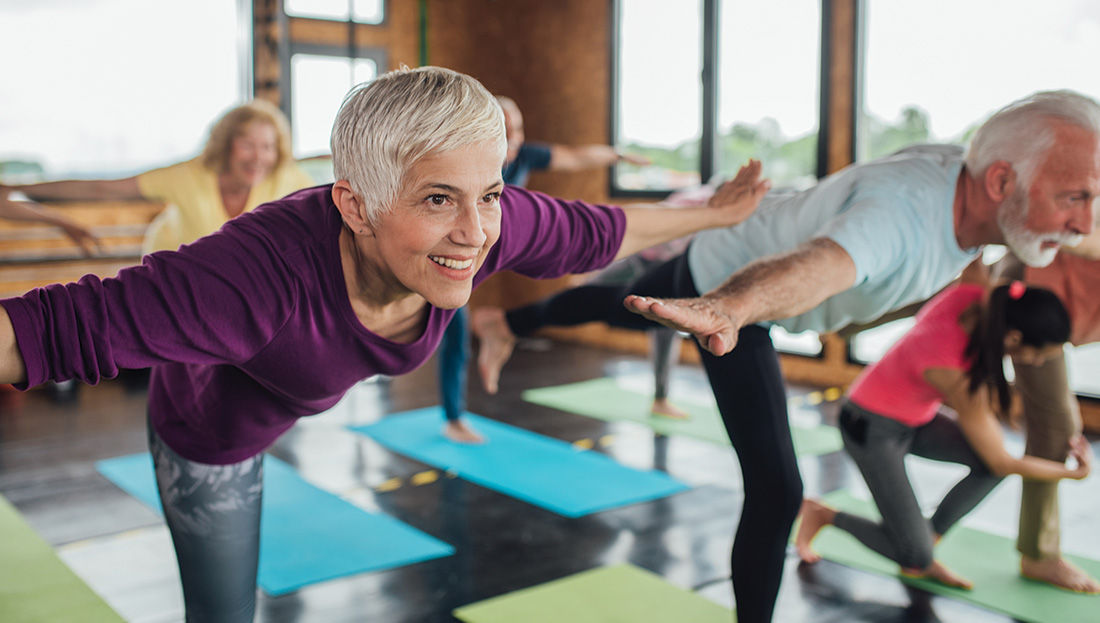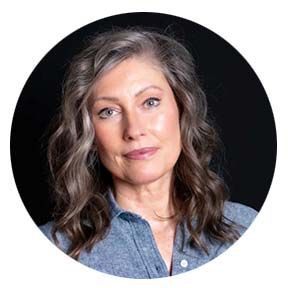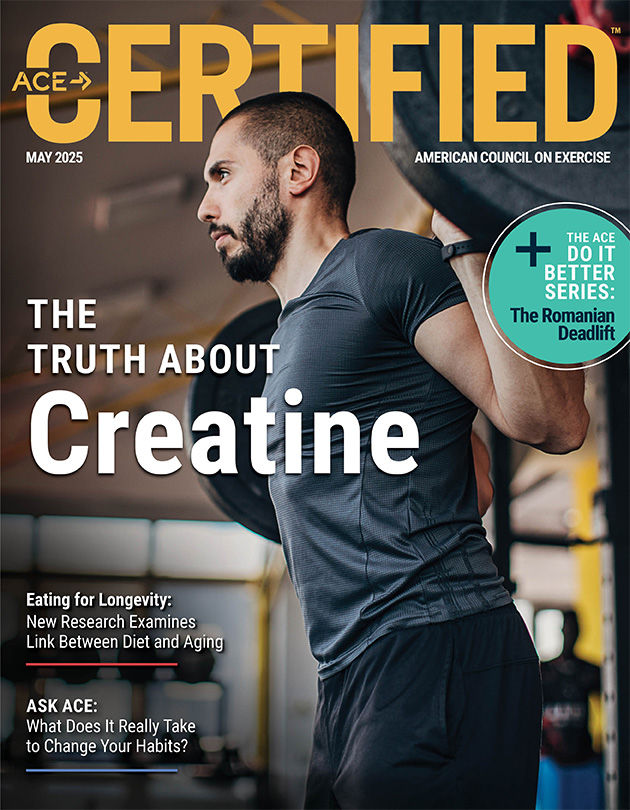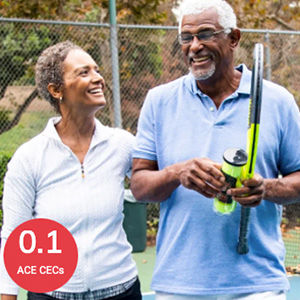

Editor’s Note: Sabrena Jo, PhD, ACE’s Senior Director of Science and Education, recently published her original research study on the impact of caring and task-involving climates in older adults’ group fitness class experiences in the Kansas Alliance of Health, Physical Education, Recreation and Dance. Here, Dr. Jo presents a summary of the results of her study, along with practical guidance on how you can apply this information in your work as a health and exercise professional.
As a long-time advocate for evidence-based fitness programming, especially for older adults, I’ve often asked myself: What makes someone stick with exercise—especially when they’re in their 60s, 70s or beyond?
For many years, I taught group fitness classes specifically for older adults. These classes were vibrant and full of personality, but I noticed something interesting—some people were consistent class regulars, attending week after week, while others seemed to drop out after just a few sessions. It wasn’t always about the exercises themselves; something deeper was at play. That sparked my desire to dig into the why behind adherence and commitment in this population.
So, as part of my dissertation research for my doctorate in the Psychology of Health and Physical Activity, I led a study examining how a motivational climate—specifically a caring and task-involving climate—impacts older adults’ experiences in group fitness classes. Our findings revealed what I had long suspected from personal experience: the environment we create as exercise professionals plays a significant role in whether our participants keep showing up, feel empowered and, ultimately, experience the full benefits of physical activity for longevity.
Why This Study Matters
According to the U.S. Census Bureau, the share of Americans aged 65 and over is projected to rise from 17% in 2022 to about 22% by 2040 and 23% by 2050, meaning that nearly one in four Americans will be over the age of 65 in the decades ahead. While the benefits of regular physical activity in this age group are well-documented—from reduced chronic disease risk to improved cognitive function and independence—only about 14% of older adults currently meet national physical-activity guidelines.
This gap is not just about awareness. Most older adults know exercise is good for them. The real challenge is sticking with it. That’s where motivational climate comes in. Our study looked at how the psychological and social atmosphere in group fitness classes—essentially, how the class feels about and perceives the exercise environment—affects older adults’ motivation, commitment and core psychological needs.
What We Found
In surveying 98 older adult exercisers (average age: 72), we discovered that those who perceived their group fitness class as caring and task-involving also reported higher levels of motivation, satisfaction of basic psychological needs (i.e., autonomy, competence and relatedness) and stronger commitment to exercise.
Let’s break down those terms:
- Caring Climate: Participants feel welcomed, respected and emotionally supported.
- Task-involving Climate: Emphasizes effort, learning and personal progress rather than competition or comparison.
Together, these climates helped create a setting where older adults wanted to come back—not because they had to, but because they felt good doing so. In contrast, when a class was perceived as ego-involving (focused on being the “best” or outperforming others), motivation suffered.
Why This Is Crucial for Longevity
If we want to promote longevity through physical activity, we must move beyond just teaching exercises. We must create a psychological environment that reinforces intrinsic motivation—things like joy, mastery and social connection. These are the factors that keep people returning for months and years.
When older adults feel autonomous (free to choose), competent (capable of succeeding) and related (socially connected), they’re more likely to stick with movement routines long-term. And as we know, consistency over time—not intensity or perfection—is the secret to living a physically active lifestyle and ultimately aging well.
Practical Tips for Instructors: How to Create a Caring, Task-involving Climate
So, if you’re a group fitness instructor, what can you do to implement the findings of this research into your classes? Here are several evidence-based, actionable strategies:
1. Recognize Effort Over Outcome
Instead of praising someone for lifting the heaviest weights or having perfect form, highlight effort:
- “I love how you’re staying focused through this whole set!”
- “It’s great to see you try that new balance move—well done!”
This shifts the emphasis from performance to personal progress.
2. Normalize Mistakes as Part of Growth
When someone loses balance or struggles with choreography, respond with empathy and encouragement. Say:
- “That’s okay! We’re all learning together.”
This reduces anxiety and keeps people feeling safe.
3. Create Opportunities for Connection
Encourage brief partner drills or post-class conversations, or simply learn participants’ names. When people feel known, they’re more likely to return.
4. Offer Choices Whenever Possible
Allow participants to choose between two versions of a movement and give them options related to intensity. This supports autonomy and keeps them engaged.
5. Celebrate Milestones—Big or Small
Whether it’s showing up for three classes in a row or increasing mobility, recognize consistency and growth with enthusiasm.
6. Avoid Highlighting “Top Performers”
Praising only the fittest or most skilled participants can inadvertently discourage others. Instead, celebrate inclusive wins:
- “Our whole group is getting stronger together!”
Class Cues and Phrases to Reinforce Climate
Here are some phrases I often use to reinforce a caring, task-involving climate:
- “Every step you take today is a step toward your own health journey.”
- “Experiment with ways to move that work best for your body.”
- “Let’s celebrate showing up today—that’s the hardest part!”
- “We’re not here to be perfect. We’re here to move and feel good doing it.”
Want to Learn More?
This research was published as Impact of Caring and Task-Involving Climates in Older Adults’ Group Fitness Class Experiences and highlights evidence-backed strategies for exercise adherence in older adults (Jo et al., 2025). For more insight, I encourage you to review the full study or explore more resources from ACE on motivational strategies and behavior change in aging populations. In fact, the themes covered in this research were foundational to the ACE RRAMP Approach, which details how group fitness instructors can cultivate lasting behavior change among their class participants.
Together, we can help more people age actively, confidently—and with joy.
Reflections on the Power of Environment
As instructors, we often focus on program design, rep counts or class playlists—but the tone we set may matter even more. It’s easy to forget that some older adults come to class battling loneliness, chronic pain or confidence issues. A kind word, a welcoming smile or simply creating an atmosphere where they feel seen can make all the difference.
In our study, participants who experienced these supportive climates were not only more motivated but also more committed to continuing exercise in the future. That’s the holy grail of behavior change—and it’s within our reach as leaders.
Bringing It All Together
Whether you teach strength training, balance, chair yoga or aquatic exercise, you can shape your class into a space that fosters longevity—both mentally and physically.
When we take the time to design not just the workout, but also the climate, we give older adults a reason to stay active for the long haul. That’s what this work is about. That’s the kind of fitness culture that supports healthy aging—and one I’m proud to contribute to.
If you’re an instructor reading this, know that your influence goes beyond movement. You are a catalyst for resilience, confidence, connection and vitality. Your words, your energy and your approach to climate creation are important factors in transforming one’s exercise experience from average to outstanding.
Let’s use them well.
Expand Your Knowledge
Motivating Older Adults: The Key to Health Aging
According to the Centers for Disease Control and Prevention, one in four US adults over 50 do not engage in regular physical activity. How do we encourage these individuals—particularly those who have spent a lifetime void of exercise—to make moving a habit? The key is understanding behavior change strategies. In this video training led by Anthony Wall, ACE Certified Personal Trainer and ACE Behavior Change Specialist, you will explore Prochaska’s Stages of Change to better understand the mindset of older adults. By learning important motivational strategies, you will be prepared to design effective programs tailored to your clients and give them the support and tools they need to embrace more active lifestyles.










